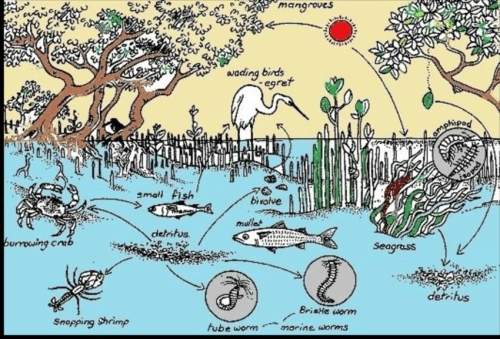

Answers: 2


Other questions on the subject: Biology

Biology, 21.06.2019 20:30, kendricklamar29
The collared lizard is a species found in the desert southwest. male collared lizards show considerable color variation, ranging from brightly colored to a very dull pattern. your goal is to determine the function, if any, of male color patterns in collared lizards, using the scientific method. your tentative explanation is that male color plays a role in attracting females for mating purposes. you predict that females will preferentially choose brightly colored males over dull-colored ones. to test this prediction, you observed the interactions of female collared lizards with their male counterparts. you selected males that were the same age and size, and that differed only in their coloration pattern. you placed equal numbers of the two types of male lizards, bright and dull, in aquariums, along with one female lizard per aquarium. out of 350 aquariums observed, the female chose to mate with the brightly colored male 277 times, and the dull-colored male 70 times. in 3 instances, the females did not mate with either type. create a bar graph of your data, plotting the type of male (dull or brightly colored) on the x-axis. on the y-axis, plot the frequency with which each type of male was chosen by females. using this graph, answer the following question(s). is it reasonable to conclude (i. e., is it supported by the data) that female collared lizards prefer more brightly colored male lizards over dull-colored males?
Answers: 3

Biology, 21.06.2019 20:30, chozz2783
Match the descriptions / definitions with the term they best describe 1. three dimensional relationship of the different polypeptide chains in a multisubunit protein or protein complex 2. common folding pattern in proteins in which a linear sequence of amino acids folds into a right-handed coil stabilized by internal hydrogen-bonding between polypeptide backbone atoms. 3. the amino acid sequence of a protein 4. a region on the surface of a protein that can interact with another molecule through noncovalent bonding. 5. three-dimensional arrangement of alpha-helices and beta-sheets within a single polypeptide, typically stabilized by a variety of noncovalent bonds, including ionic and hydrogen bonds, and nonpolar interactions / hydrophobic force. 6. the chain of repeating carbon and nitrogen atoms, linked by peptide bonds, in a protein. 7. common structural motif in proteins in which different sections of the polypeptide chain run alongside each other and are joined together by hydrogen bonding between atoms of the polypeptide backbone. 8. portion of a polypeptide chain that has a discrete tertiary structure of its own and can often fold independently of the rest of the chain 9. regular local folding patterns in a protein, including alpha-helix and beta-sheet a. primary structure b. beta-sheet c. protein d. coiled-coil e. polypeptide backbone f. secondary structure g. side chain h. tertiary structure i. binding site j. alpha-helix k. quaternary structure l. protein domain
Answers: 2
You know the right answer?
Which percentage is in the appropriate range for a snack to be considered a "good source" of nutrien...
Questions in other subjects:


Mathematics, 25.08.2021 16:40

Social Studies, 25.08.2021 16:40

History, 25.08.2021 16:40



Social Studies, 25.08.2021 16:40

Biology, 25.08.2021 16:40


English, 25.08.2021 16:40




